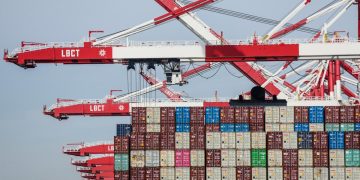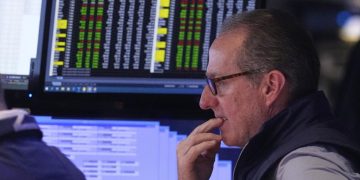In the backdrop of a robust US dollar and persistently high interest rates maintained by the Federal Reserve, the first half of this year saw an encouraging rise in international gold prices, delighting investors as it remained around the 2400 USD per ounce mark. Particularly as the market anticipates more dovish signals concerning a potential rate cut in September during the Federal Reserve’s policy meeting in July, there is optimism for continued growth in international gold prices.
Amidst frequent uncertainties, gold’s role in asset allocation is gaining more attention from investors. The global central banks’ continuous gold purchases further fueled the demand. Looking back at the second quarter, global gold demand saw a robust growth of 4%, totaling 1,258 tons, marking the strongest second-quarter demand on record. The rise in non-market demand, ongoing central bank purchases, and cooling ETF outflows have collectively propelled gold prices to new highs. The average gold price in the second quarter reached 2,338 USD per ounce, a rise of 18% year-on-year, even peaking at 2,427 USD per ounce, a historic high. The continuous gold buying spree by global central banks remains a key driver for the increase in global gold demand.

The latest report from the World Gold Council shows that in the second quarter, the total official gold reserves globally increased by 184 tons, up 6% year-on-year, though the growth rate slightly slowed compared to the first quarter. According to the annual survey carried out by the World Gold Council, most central banks believe that in the current complex economic and geopolitical environment, gold reserves are likely to continue to grow over the next 12 months due to the need to protect investment portfolios and diversify risks.
This year’s first half witnessed global central banks purchasing a net of 483 tons of gold, 5% higher than the 460 tons in the first half of 2023. In terms of investment, global gold investment demand remained relatively resilient, yet different types of gold investments displayed varying trends. In the second quarter, global demand for gold bars and coins amounted to 261 tons, down 5% year-on-year, while the first half saw a marginal decline compared to the same period last year. Despite a minor outflow of 7 tons, totaling 3,105 tons, Asia continued to see inflows; Europe switched to inflows in May and June after several months of outflows; and North America showed a significant slowdown in outflows compared to the previous quarter. In the first half, global gold ETFs saw an outflow of 120 tons, the highest since 2013.
Comparing investment demand, the high gold prices had a depressing effect on global gold jewelry consumption in the second quarter, which fell by 19% year-on-year to 391 tons. In the first half, global gold jewelry demand declined by 10% year-on-year to 870 tons. In China, the important gold jewelry market, demand hit a new low for the same period since 2009, standing at just 86 tons. Nonetheless, the World Gold Council believes this downturn is not unique to China. Major gold jewelry consumer markets like India, the Middle East, and the Americas also showed varying degrees of decline due to historically high gold prices.
Looking ahead, China’s market may see some improvement in gold jewelry demand in the second half, depending on economic development. If price fluctuations ease, the pressure of high gold prices on gold jewelry demand may reduce, potentially supported further by the seasonal boost in the fourth quarter. However, industry consolidation might lead to reduced upstream physical gold and manufacturing demand. The key to future growth in this sector lies in consumer sentiment.

Gold as an investment instrument continues to gain traction. Despite being a non-yielding asset, its performance in the first half demonstrates gold’s appeal to investors. With the possibility of the Federal Reserve starting to cut rates in September becoming more likely, international gold prices are expected to continue climbing. Currently, investors are awaiting more dovish signals from the Federal Reserve’s July policy meeting.
Recent inflation data shows a noticeable decline in US inflation levels, supporting the case for rate cuts. Several Federal Reserve officials, including Chairman Powell, have recently adopted a ‘dovish’ tone, reinforcing market expectations for rate cuts in September. Against this backdrop, gold assets have garnered wider attention from investors, particularly amidst global uncertainty and rising gold prices. More institutional investors are incorporating gold into their asset allocations.
In 2022, the World Gold Council introduced the concept of ‘Gold+’ in the Chinese market. ‘Gold+’ refers to including a certain proportion of gold in investment portfolios as a strategic long-term asset allocation. The ‘Gold+’ strategy can enhance the risk-adjusted returns of an investment portfolio, mitigating currency and financial market volatility. Moreover, gold provides a unique source of long-term returns, with annualized returns exceeding 8% since the dissolution of the Bretton Woods system. Given its low correlation, or even negative correlation, with stocks and bonds, gold offers a distinctive source of long-term income, boosting the risk-adjusted returns post-portfolio adjustment.
Looking ahead, a key question is what the ‘catalysts’ sustaining gold’s dominant role in investment strategies will be. Anticipated rate cuts by the Federal Reserve have rekindled Western investors’ interest in gold, with growing inflows into gold ETFs expected in the second half of 2024. Recently, India announced a reduction in import tariffs, creating favorable conditions for gold demand as high domestic prices were a significant barrier for local consumers.
































